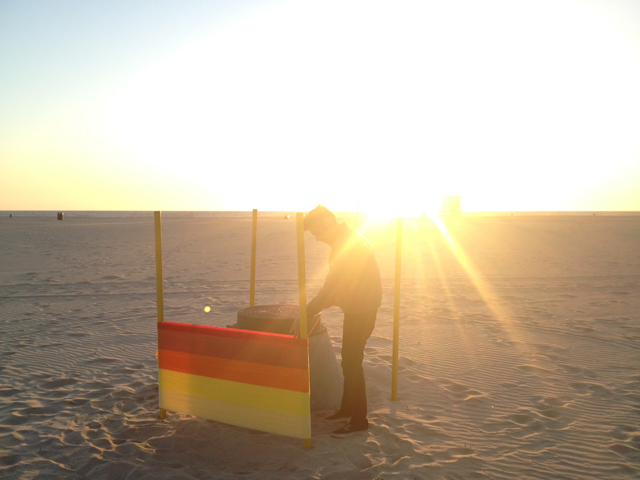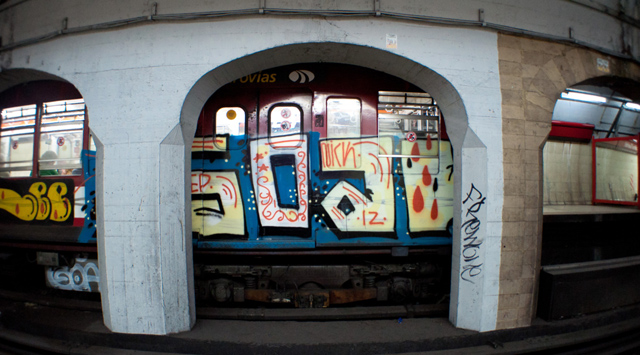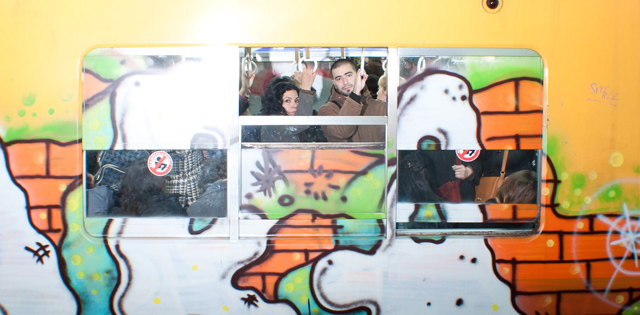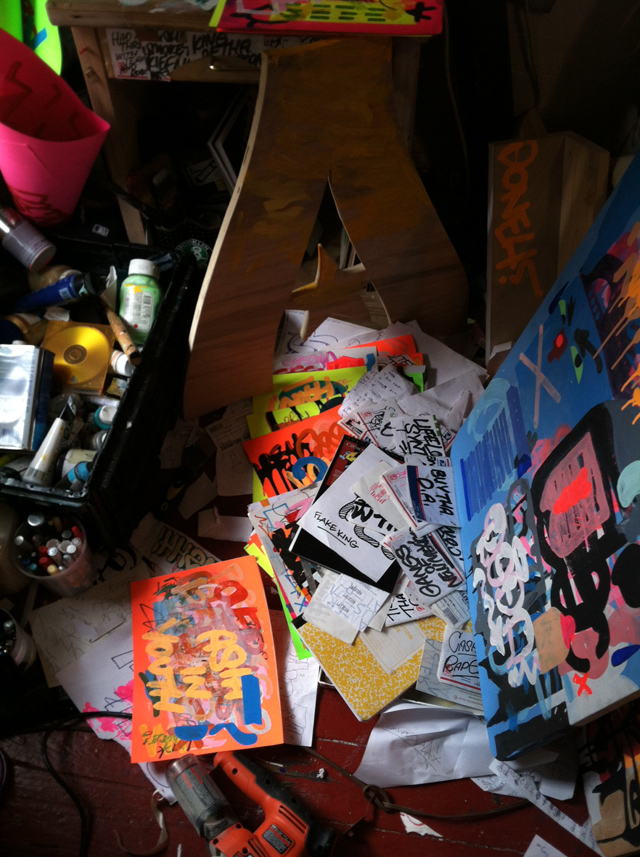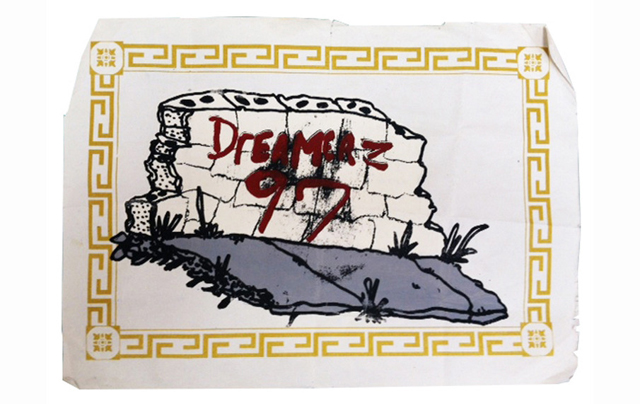
At the heart of graffiti is the old adage “if there’s a will there’s a way;” this idea manifests itself through the practical application of fire extinguishers, home made etch, and other DIY solutions. Opening this week, Vagrants will focus on the work of what DIY curation Vagrant Space defines as “social outsiders.” On view will be the work of Adam Void, Peter Dear, George Charles Bates, Andrew H. Shirley, Jefferson Mayday Mayday, Chelsea Ragan, Craig Mammano, Jeffrey Vincent, Dylan Thadani, Edwards Harper, Margaret Rogers, Emily Campbell, Misha Capecchi, and Safwat Riad. A combination in the curation efforts of Andrew H. Shirley and Vagrant Space, this show is one not to miss for those who love the grime and DIY ethos behind graffiti.
For a more in depth look at the ideologies behind this project, the following press release offers a key to understanding the work of artists who position themselves outside of traditional contact and society.

From the press release:
Vagrant Space is an ongoing curation for a new generation of Outsider Artists. This new school no longer fits the caricatured confines of the self-taught, emotionally troubled, and uneducated recluse promoted by the Folk Art gallery world. Coming of age during the transformative years of globalization, internet proliferation, and social media, these artists share the affects traditionally ascribed to social outsiders: many of them don’t utilize contemporary social media skills, eschew the responsibilities of ‘maturity,’ and most importantly, genuinely reflect the homelessness that is hallmark to this era of twenty and thirty-year-olds.
The fourteen artists featured in the first round of Vagrant Space hail from Asheville, Seattle, Baltimore, Brooklyn, Portland, San Francisco, and Sydney. They all represent this new generation of outsider artist. Many of these artists are travelers, recluses, graffiti artists, and social outcasts. Vagrant Space seeks to share their work with the public at large through a series of pop-up shows, print publications, and an online gallery.
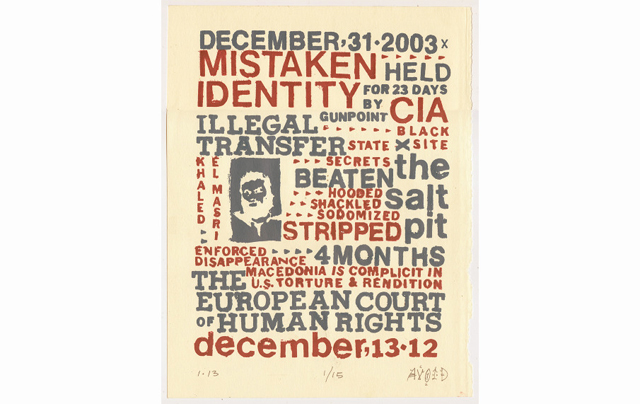

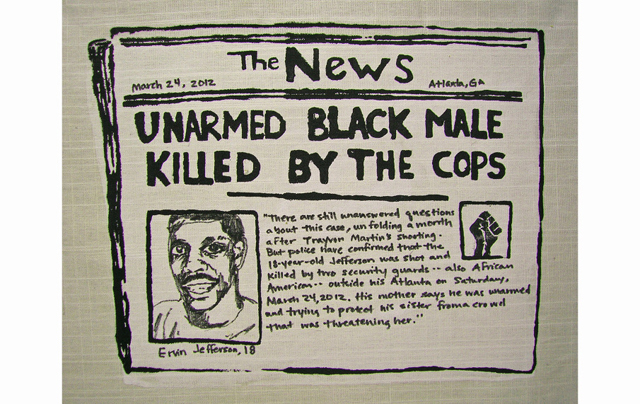
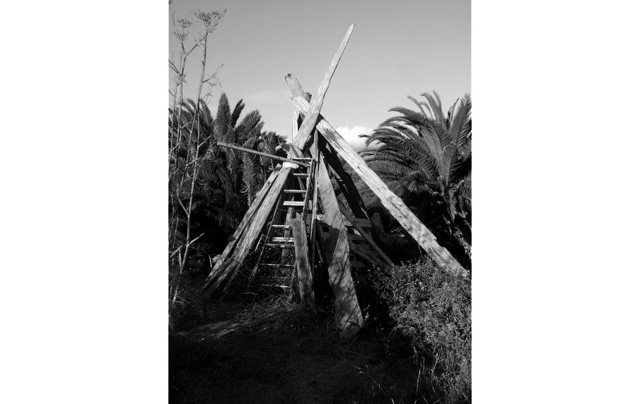
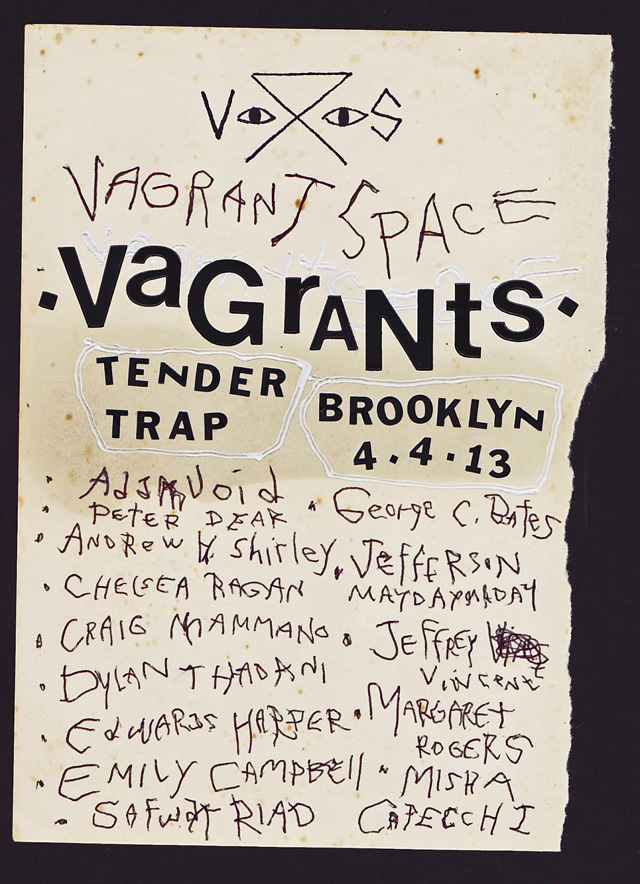
Vagrants, the first group show from this collective, will take place Thursday, April 4th from 6-10pm at Tender Trap (254 South 1st St. Brooklyn, NY).
Photos courtesy of Vagrant Space



















